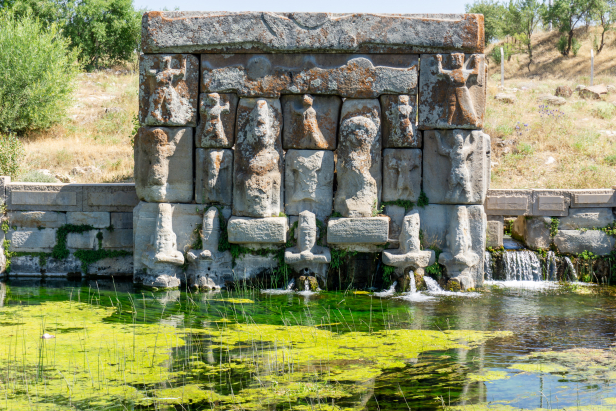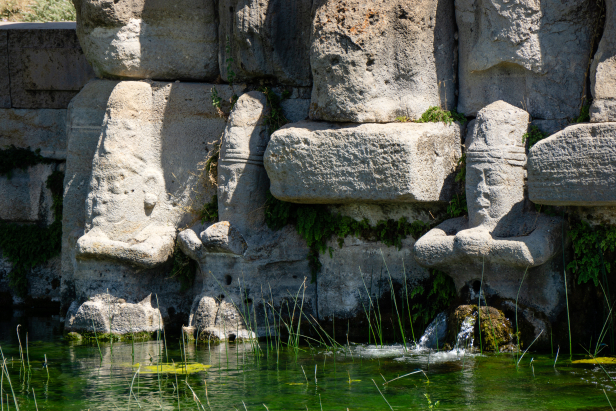The Town of Beyşehir
/ By Josh
The town of Beyşehir sits on the banks of Lake Beyşehir, where the plains of Konya Province reach the feet of the Taurus Mountains. Combining the beauty of the mountains and the lake with some truly unique historical sights Beyşehir has far more to attract visitors than most towns its size.
During the 13th century the Seljuk Empire gave the nobles of Anatolia greater autonomy, leading to the formation of principalities with their own rulers and capitals. Beyşehir was established by the Eshrefids as one of these capitals with new grand mosques, religious schools, markets, and walls being built. However, the Eshrefid Principality (Eşrefoğlu Beylik) would be short lived. To the north-west another one of these principalities was expanding, growing into what would become the greatest power of its time, the Ottoman Empire.
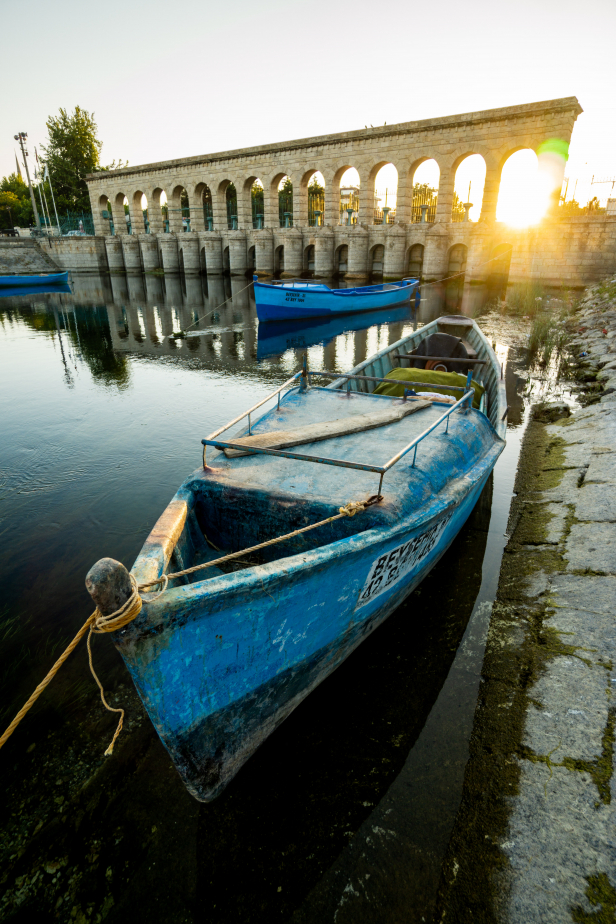
Why Visit?
Old Beyşehir
Tarihi Beyşehir
Cost: Free
While the Eshrefid Principality would be short lived, some of their works, the Eşrefoğlu Mosque in particular, would go on to become some of the most beautiful works of the era and become UNESCO World Heritage Tentative Listed. The heart of historic Beyşehir is the main reason people come to visit
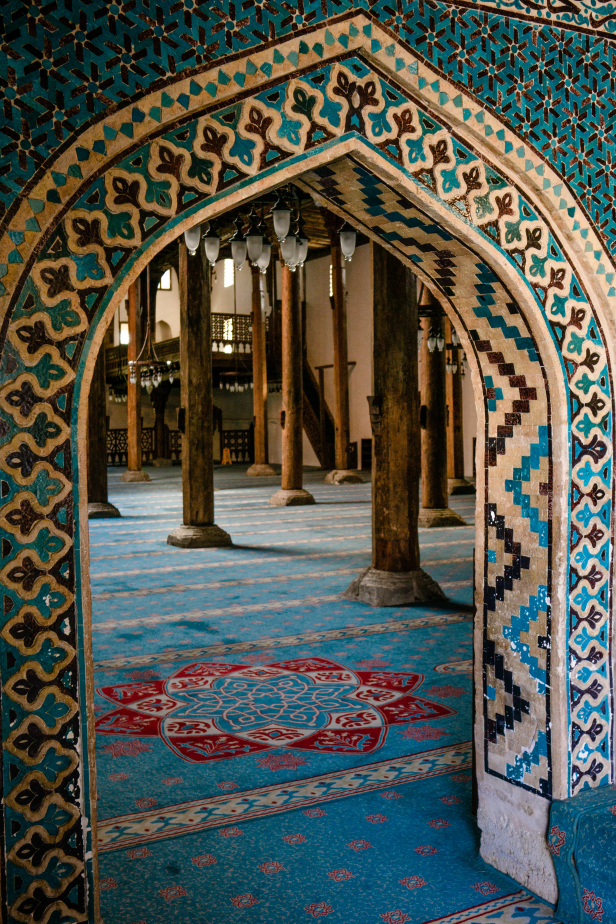
Eşrefoğlu Mosque
The Eşrefoğlu Mosque was built in 1299 by Süleyman Bey, second ruler of the Eshrefids. It was built in a style somewhat unique to that time, combining outer walls of stone with 46 cedar columns holding up a great wooden roof (you’ll notice some Roman era decorative marble carvings in the walls, a typical sight in Seljuk era buildings built on the heels of the Romano-Byzantine power collapsing in the area).
The columns are capped with wooden capitals carved and painted to resemble the stone capitals of grander Seljuk mosques. The mihrab (niche denoting direction of Mecca) is magnificently ornate, covered in numerous tiles of turquoise, white, and black. Capping the mihrab is the mosques only non-wood portion of roof, a dome of brick and glazed tiles on the inside, and on the outside an octagonal cone.
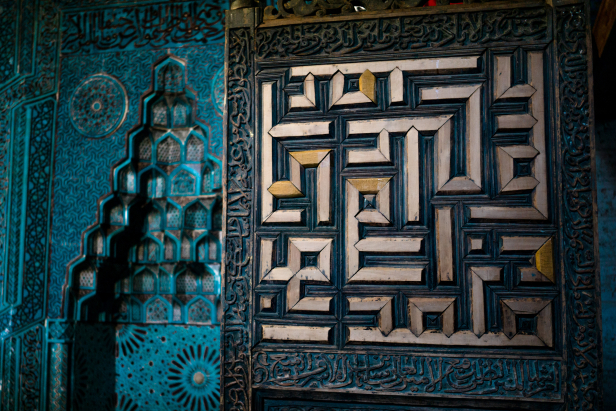
In the center of the mosque is a rather conspicuous pit. The pit is said to have been filled with snow from the mountains to cool and humidify the mosque during the hot dry summers, both for the comfort of the congregants as well as the preservation of the mosque’s woodwork.
While there are other wood mosques like the Eşrefoğlu Mosque, none are so large, ornate, or well preserved as the one found here in Beyşehir.
Entering the mosque you may notice that the outer wall is at a strange angle to the rest of the mosque, a rarity in a building where all the worshipers sit in perfectly ordered rows. This outer wall is said to have been added after the fact in line with the road rather than the building itself. The crown portal in the outer wall is beautiful as is the much smaller second entrance just inside.

Just three years after the completion of the mosque, its builder, Süleyman Bey, died and was buried in the great cone-topped mausoleum on the left of the mosque.
Ismail Ağa Madrasah
Built awkwardly close to the side of the Eşrefoğlu Mosque is the Ismail Ağa Madrasah, named after its builder who commissioned the building of the school in the mid 14th century. The crown portal opens into an open courtyard with cells on each side and a large vaulted platform at the back. Exactly why such a beautiful crown portal would be built right up against the side wall of the mosque where it can’t be seen is something of a mystery.

Bedestan
Across from the madrasah and mosque is the bedestan (market building) capped with six low domes and surrounded with small vaulted spaces used as shops.
Beyşehir Castle Gate
A short walk away from the historic center of Beyşehir is the sole remaining portion of the city’s ancient fortifications. All that remains is a lone gate, heavily restored so that all that remains of the original is the stones of the archway, some of the parapet, and the deeply rutted roadbed.
Beyşehir Bridge
Beyşehir Köprüsü
Cost: Free
At the heart of modern Beyşehir is the Beyşehir Bridge, spanning the outlet canal of the lake and connecting the northern and southern halves of the town. The Bridge, built in 1908 as a part of the Anatolian Railway network, is actually a dam controlling the water levels of the lake and the irrigation of one of Turkey’s most productive agricultural regions downstream. The bridge consists of thirteen arches that serve as gates that can be opened and closed by lowering gates.
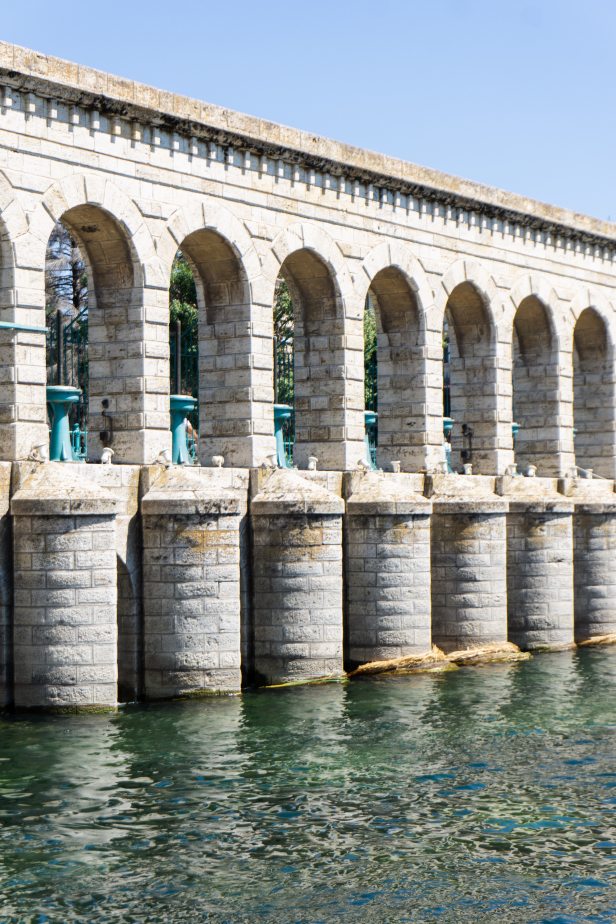
Lake Beyşehir
Beyşehir Gölü
Cost: Free
What really sets Beyşehir apart from the rest of Konya’s many towns is the beauty of Lake Beyşehir. Within the town there are parks, row boats for rest, boardwalks, running tracks, and spaces set apart for picnics. Outside the Town of Beyşehir the lake tends to be muddy reed beds, though, thirteen kilometres west of the city there is Karaburun Beach, a long stretch of sand popular with sunbathers and swimmers.
Ancient Monuments of Fasillar Village
Fasıllar Antik Anıtları
Cost: Free
Twenty kilometers to the east of the Town of Beyşehir in the village of Fasıllar are a pair of ancient monuments that show a history that predates the Seljuk presence by some 2000 years. Lying on the slopes above the village is a massive eight metre long stone weighing an estimated seventy tons and carved with a set of Hittite deities. At the base is a mountain god flanked by a pair of snarling lions , standing on the trio is the massive form of the Hittite storm god Teshub, one hand outstretched and another raised above his head.
The figures are only roughly carved; likely it was intended that the statue would be finished in place as the finer details would be prone to breaking during transport. Exactly why this massive piece was abandoned is still a mystery.
Some early theories suggested that the Fasıllar monument was originally built to be set atop the monument at the nearby Hittite shrine to the spring god (see below), though recent research has argued against this.
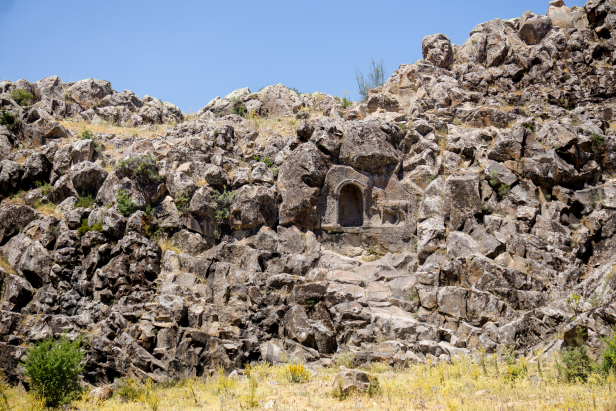
Directly across the narrow valley from the abandoned Hittite storm god monument is the Lucianus (Lukyanus) Monument. According to an inscription close to the base of the monument Lucianus was a successful horseman, the ornately carved horse standing next to a carved archway a fitting tribute. Further up the slope the scant remains of roman-style graves can be found carved into the cliffs.
Eflatun Pınar Hittite Shrine
Eflatun Pınar
Cost: Free
Twenty kilometers north of Beyşehir are the rather unique remains of a shrine known as Eflatun Pınar. The name Eflatun Pınar means “The Spring of Plato” or “The Lilac Coloured Spring”, though neither seem particularly applicable here. The over 3000 year old site is a shrine built by the Hittites as a part of their spring cult.
The shrine is centred upon a roughly square pool of water carved out and lined with stone on the bottom and sides. On one end is a low platform that juts out into the water and across from it is a 6 meter tall structure decorated with Hittite gods. Seated in the middle are a divine couple, each crowned with a sun-disc, symbols of divinity. On either side of the central pair are the mystical figures of lion-men and bull men. Most interesting of all are the five mountain gods at the base of the structure who appear to be rising out of the water itself. In three of these figures holes have been drilled to allow water to flow though into the pool. Capping the entire structure is a massive basalt block carved with a third sun-disc with wings spanning the width of the structure.
Around the low walls of the pool, the seated figure of the mother goddess can be seen with a space in front of her, likely used for offerings. Just a few meters away from the pool is a massive basalt block weighing twenty tons carved with three bulls.
Beyşehir Eşrefoğlu Turkish Bath
Beyşehir Eşrefoğlu Hamamı
Cost: Unknown
Unfortunately we haven’t had the chance to experience Beyşehir’s Eşrefoğlu Hamam, though we did take a peek inside the 13th century bathhouse. From what we could see it is a well maintained, clean, and very authentic Turkish bath that we’d love to visit some time soon!
Kubadabad Palace
Kubadabad Saray
Cost: Free
On the Western banks of Lake Beyşehir (60 kms by car or 25 by boat from the town itself) are the remains of Kubadabad Palace, a sprawling complex of crumbling walls and vaulting. Built in the first half of the 13th century for the Seljuk Sultan Kayqubad I, it was a luxurious palace built in the cool of the lakeshore and mountains. Excavations here revealed beautiful glazed tile work, now on display at the Karatay Museum in Konya (Sultan Kayqubad I was also responsible for converting the Aspendos Theater of Antalya into a palace and decorating it with similar tiles). The tiles are eight-pointed stars depicting various animals as well as a Seljuk two-headed eagle, and an image of the sultan himself. A short distance away on an island in the lake is a fortress from roughly the same era, known today as Kızkulesi, or ‘Maidens Tower’.
How To Get There
Publıc Transıt/Taxi
As a significant town, Beyşehir gets regular bus traffic from the City of Konya leaving from the Konya Otogar. There are small busses leaving from Konya direct to Beyşehir or larger busses running from Konya to Seydişehir, from which you’ll be able to take a smaller bus to Beyşehir. To visit some of the other sights outside of the town itself (Eflatun Pınar Hittite Shrine or Fasıllar Monuments etc.) it is possible to arrange for a taxi to take you there and back.
Car
In order to visit Beyşehir and the scattered sites surrounding the town a car is by far your best option. To get to Beyşehir from Konya (as well as Ankara or Istanbul) you simply follow the D330 highway westward out of the city, running directly to Beyşehir.
For more about car rental and driving in Turkey make sure to read our full drivers guide.
Fasıllar Monuments
To get to the village of Fasıllar from Beyşehir follow the D330 heading south east. Take a left towards the village of Çiçekler just 4 kilometers outside of the town. Passing through Çiçekler continue straight on for another 2.7 kilometers to the village of Fasıllar. Both monuments are on the left on the hill above the village. There is a rough gravel road running up to them though not all cars may be able to make it.
Eflatun Pınar
To get to Eflatun Pınar head north on the D330 (note that there are two DIFFERENT D330 highways heading north from Beyşehir, take the one following the lake) towards Şarkikaraağaç, turn right onto the Akburun Köyü road after 13.5 kilometers. After a couple kilometers take a sharp left where the road merges with another village road. The shrine will be visible on your right in about one kilometer.
Karaburnu Beach
Head east on Prof. Dr Yılmaz street for 14 kms, turn right onto Yeşildağ road, then turn right 600 meters later following signs up towards the beach.
Where To Stay
There are minimal accommodation options in Beyşehir, though the hotels are of very good quality considering the size of the town. Seydişehir (32 kms away) has a couple of hotels as well, and of course Konya has a great selection of hotels though they are quite far away (88 kms).
Other Tips
Planning on visiting Beyşehir? Make sure to check out the City of Konya and the many other amazing sights that the province has to offer!
Have any tips or info to add? Spot any mistakes? We’d love to hear about it.





